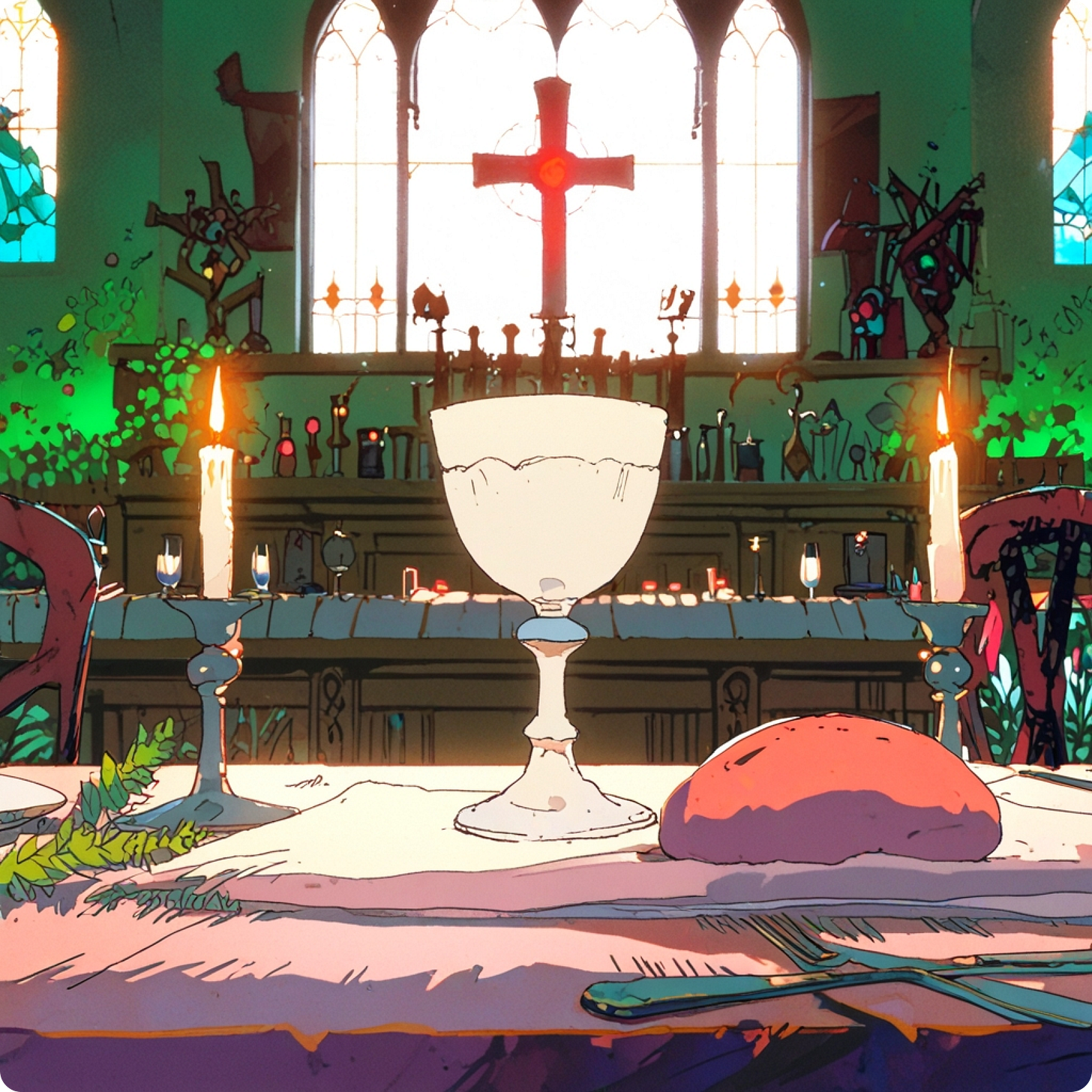The Lord's Supper
Having grown up attending church, I saw my parents along with other believers, partake of the Lord’s Supper every first Sunday of the month. The elements were encased within brass trays neatly displayed upon a wooden table with the inscription “IN REMEMBERANCE OF ME.” As the elders distributed the elements a somber atmosphere filled the sanctuary. Years later, after passing through the waters of baptism, I was soon invited to partake of the elements. Yet at the time, I was still ignorant of what it all meant…
In this post, I’d like to explore the Reformed view of the Lord’s Supper in hopes that it would give you a richer understanding of how Christ serves his church.
A visible sign
Article 35 of the Belgic Confession states that “Christ has instituted an earthly visible bread as the sacrament of his body and wine as the sacrament of his blood.” You might be wondering, what is a sacrament? Augustine described a sacrament as “an outward and visible sign of an inward and invisible grace.”
The purpose of a “sign” is to represent a specific reality. For example, at work, I will often use a palm tree emoji 🌴 as a sign to represent that I am on vacation. Likewise, the bread and wine are signs that signify the true body and blood of Christ (Luke 22:18-20). And just as we eat bread and wine and are sustained, so truly we receive into our souls, for our spiritual life, the true body and true blood of Christ, our only Savior.1
When the Belgic Confession speaks of the “true body” and “true blood,” it rejects any notion that the bread and wine are devoid of the true presence of Christ—viewing the Supper as simply a commemorative experience.2 On the other hand, “true” does not mean that the nature of the elements has in some way become the glorified body of Christ—being worthy of worship and adoration.3 It is “true body” and “true blood” when it is received by faith, “which is the hand and mouth of our souls. In this, we feed upon Christ crucified and all benefits of his death.4
An invisible grace
The Lord’s Supper is a means of grace. The word “means” refers to an instrument. For example, a vehicle is an instrument for traveling from point A to point B. Likewise, the Lord’s Supper when accompanied by the preaching of the Word, is an instrument used by the Holy Spirit to dispense grace.5 The grace bestowed upon us strengthens and nourishes our faith. It assures us that Christ’s crucified body and shed blood has sufficiently satisfied the wrath of God so that we no longer stand condemned, but have forgiveness of sins and eternal life.6 In this way, Christ nurtures and preserves his church, assuring us that we are his.
Key Verses
John 6:53-58
1 Corinthians 11:17-26
Hebrews 10:11-18
Luke 22:16
Further Study
Westminster Confession of Faith, Chapter 29
Belgic Confession, Article 35
Heidelberg Catechism, Questions 75-79
See Belgic Confessions, Article 35.
This perspective is called the Commemorative or Memorial view and was taught by Ulrich Zwingli.
“Private masses, or receiving this sacrament by a priest, or any other, alone; as likewise, the denial of the cup to the people, worshiping the elements, the lifting them up, or carrying them about, for adoration, and the reserving them for any pretended religious use; are all contrary to the nature of this sacrament, and to the institution of Christ.” — Westminster Confession of Faith, Chapter 29.4
That doctrine which maintains a change of the substance of bread and wine, into the substance of Christ’s body and blood (commonly called transubstantiation) by consecration of a priest, or by any other way, is repugnant, not to Scripture alone, but even to common sense, and reason; overthroweth the nature of the sacrament, and hath been, and is, the cause of manifold superstitions; yea, of gross idolatries. — Westminster Confession of Faith, Chapter 29.6
WCF, 29.7
WCF, 27.3
Heidelberg Catechism, Q. 76.


